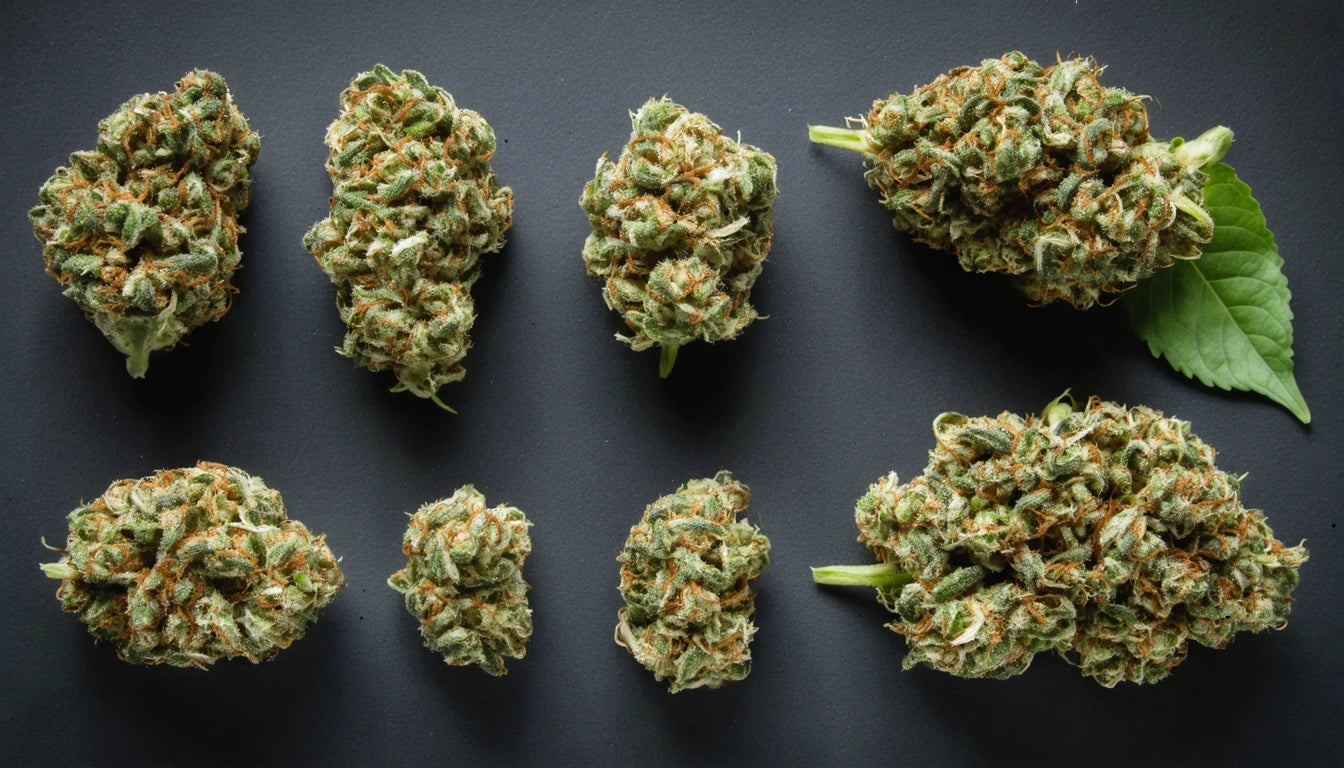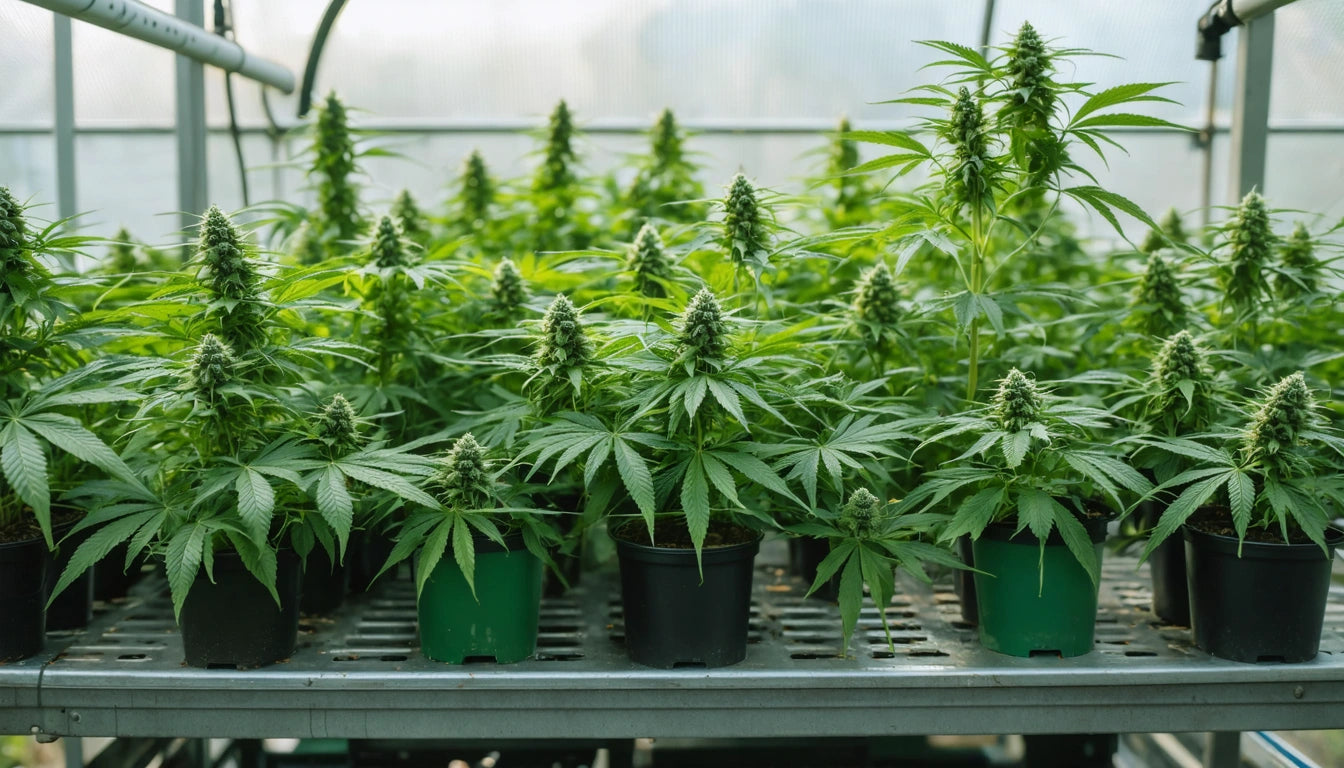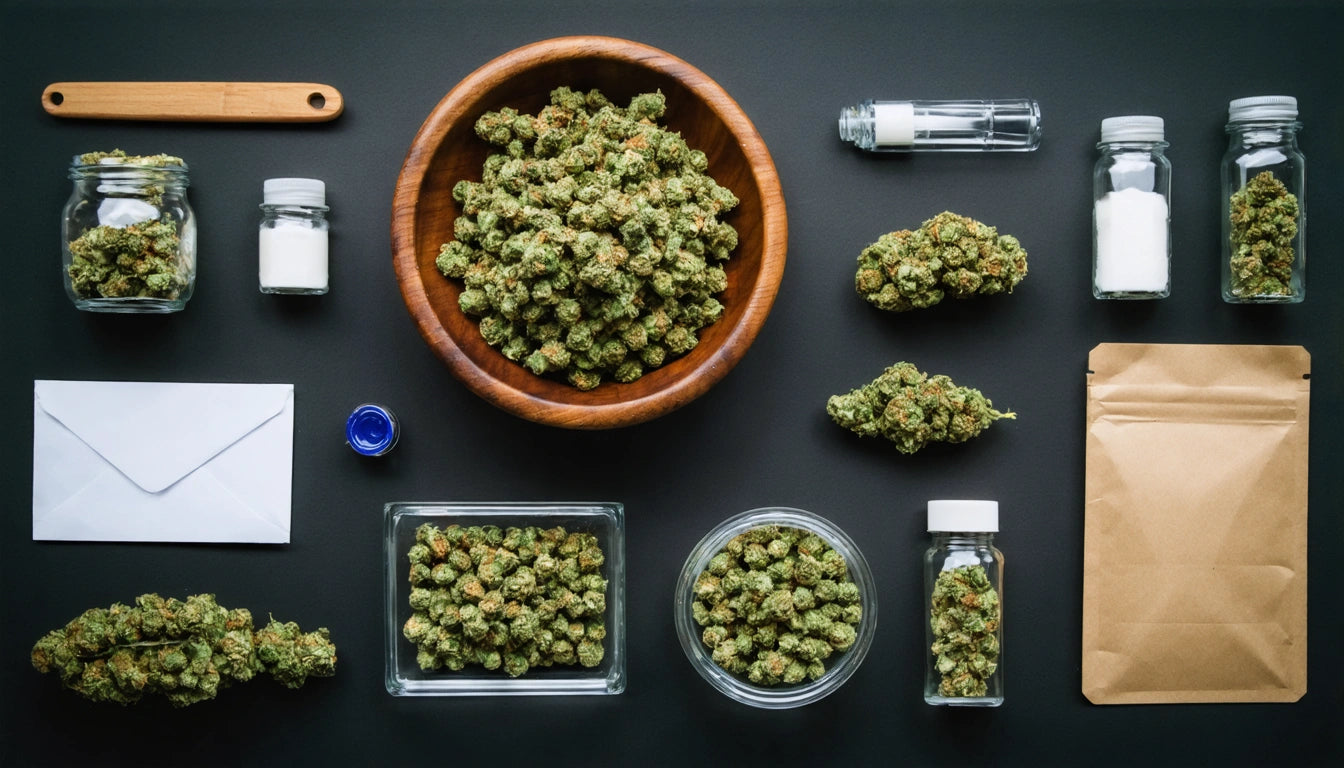Table of Contents
Understanding Laced Weed: Appearance, Smell, and Effects
Cannabis consumers deserve to know exactly what they're putting into their bodies. While legal markets have improved product safety, understanding what laced weed looks like, smells like, and feels like remains essential knowledge for anyone who consumes cannabis. This guide covers the visual indicators, smell characteristics, and effects of contaminated cannabis to help you identify potentially dangerous products.
What is Laced Weed: Understanding the Basics
Laced weed refers to cannabis that has been adulterated with other substances, often without the consumer's knowledge. These adulterants can include synthetic cannabinoids, psychoactive substances, household chemicals, or even harder drugs. According to research on contaminated cannabis products, the motivations for lacing cannabis typically include:
- Increasing potency or creating different effects
- Adding weight to increase profits
- Masking poor-quality cannabis
- Deliberately causing harm or addiction
While relatively uncommon in regulated markets, contaminated cannabis remains a concern, particularly in illegal markets where no testing or quality control exists.
Visual Indicators: What Does Laced Weed Look Like
Knowing what laced weed looks like can help you avoid potentially dangerous products. Here are key visual indicators that might suggest cannabis has been adulterated:
Unusual Appearance
Natural cannabis has a distinctive appearance with visible trichomes (crystalline structures), pistils (hair-like growths), and a generally organic look. Standard cannabis appearance should be familiar to regular consumers.
Signs that might indicate laced weed include:
- Unusual coloration or tints (blue, pink, or extremely bright green)
- Crystalline residue that doesn't look like natural trichomes
- White powdery substances that don't brush off easily
- Unusual shiny or wet appearance
- Excessively hard or brittle texture
Inconsistent Texture
Laced cannabis often has an inconsistent texture throughout the product. You might notice:
- Clumps or chunks that look different from the rest
- Unusual crystal formations that don't match natural trichomes
- Strange particles or residues that don't belong
- Uneven coloration or suspicious spots
Smell Characteristics of Contaminated Cannabis
What does laced weed smell like? The aroma can be a major indicator of adulteration. Natural cannabis has a complex but recognizable terpene profile that typically includes earthy, skunky, fruity, or diesel-like notes depending on the strain.
Suspicious odors that might indicate laced weed include:
- Chemical smells similar to ammonia, bleach, or other household cleaners
- Sweet, artificial scents that seem unnatural or overpowering
- Metallic or acrid odors
- Solvent-like smells (acetone, gasoline)
- Complete absence of smell in what should be aromatic cannabis
Experts recommend trusting your nose, as many adulterants have distinctive odors that don't match natural cannabis terpenes.
Effects and Symptoms: What Does Laced Weed Feel Like
Understanding what laced weed feels like can be lifesaving knowledge. The effects of contaminated cannabis often differ significantly from the typical cannabis experience.
Unusual Physical Symptoms
Physical symptoms that might indicate laced cannabis include:
- Extreme sedation beyond typical indica effects
- Severe nausea or vomiting
- Difficulty breathing or chest pain
- Rapid or irregular heartbeat
- Seizures or muscle spasms
- Unconsciousness or non-responsiveness
Atypical Psychological Effects
Mental or psychological effects that aren't characteristic of cannabis include:
- Extreme paranoia or psychosis beyond typical cannabis-induced anxiety
- Hallucinations (visual, auditory, or tactile)
- Complete dissociation or feeling disconnected from reality
- Extreme confusion or disorientation
- Memory blackouts
If you or someone experiences these symptoms after cannabis consumption, seek medical attention immediately. As research on contamination risks indicates, some adulterants like fentanyl can be life-threatening even in small amounts.
Common Adulterants: What is Weed Laced With
Understanding what substances are commonly used to lace cannabis can help you identify potential contamination. Common adulterants include:
- Synthetic Cannabinoids (K2/Spice): Man-made chemicals that mimic THC but can cause dangerous side effects
- Embalming Fluid/PCP: Creates a dissociative high with significant health risks
- Cocaine or Methamphetamine: Stimulants that create an energetic high contrary to most cannabis effects
- Fentanyl: An extremely potent opioid that can cause overdose in minimal amounts
- Glass, Sand, or Silica: Added to increase weight and mimic trichomes
- Laundry Detergent or Hairspray: Used to alter appearance or add weight
According to cannabis composition studies, these adulterants can significantly alter both the appearance and effects of cannabis products.
Safety Measures and Prevention Strategies
Protecting yourself from contaminated cannabis requires vigilance and smart purchasing decisions. Here are essential safety measures:
Purchase from Legitimate Sources
The most effective prevention is purchasing from licensed, regulated dispensaries where products undergo testing. In these markets, safety standards similar to those used for pharmaceutical products help ensure product integrity from production to consumption.
Inspect Before Consuming
Always examine cannabis carefully before consumption:
- Look for unusual colors, textures, or residues
- Check for strange odors or chemical smells
- Compare to known examples of quality cannabis
- Start with a very small amount if trying a new product
Testing Options
For those concerned about potential contamination, several options exist:
- Commercial drug testing kits can identify many common adulterants
- Some regions offer anonymous drug testing services
- When in doubt, discard suspicious products rather than risking consumption
Understanding what laced weed looks like, smells like, and feels like empowers consumers to make safer choices. By combining this knowledge with smart purchasing decisions and proper storage practices, you can significantly reduce the risk of encountering contaminated cannabis products.











Leave a comment
All comments are moderated before being published.
This site is protected by hCaptcha and the hCaptcha Privacy Policy and Terms of Service apply.